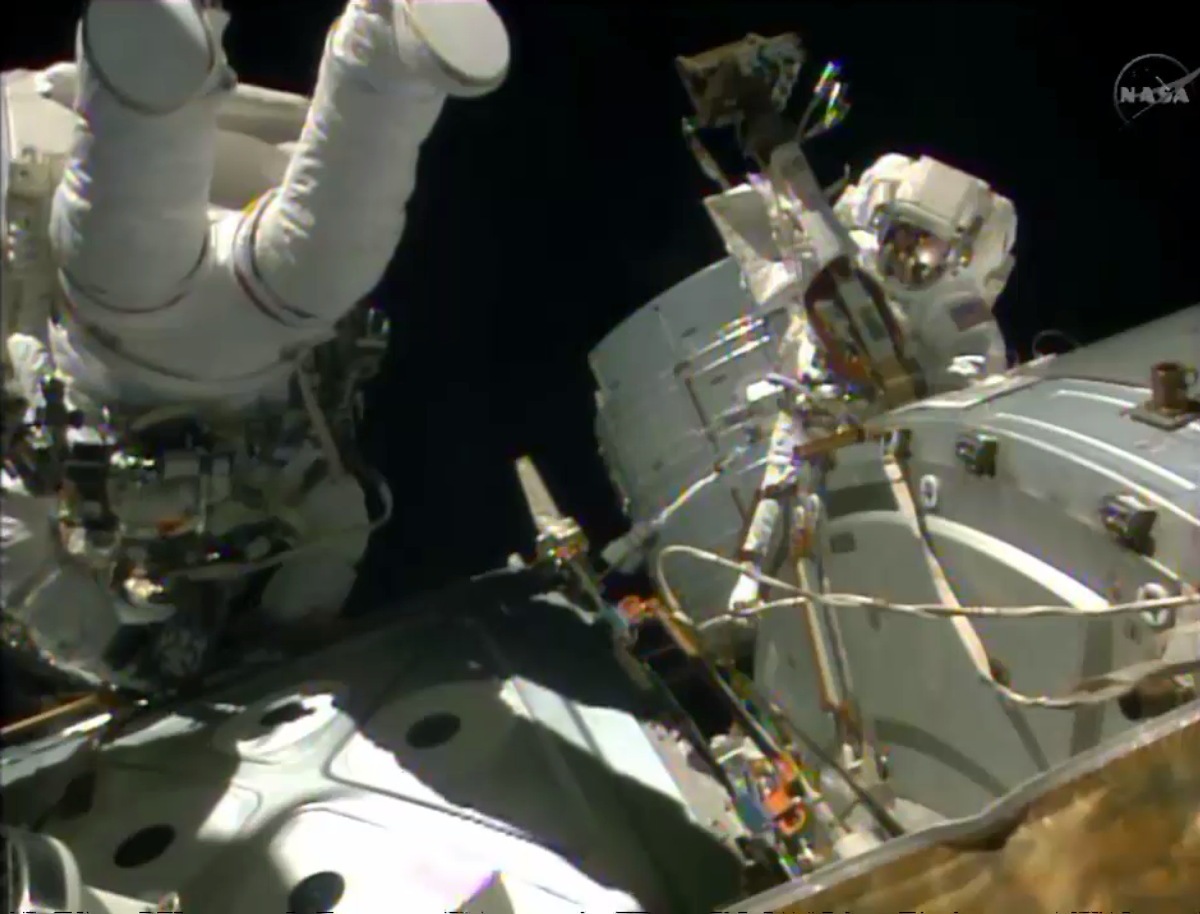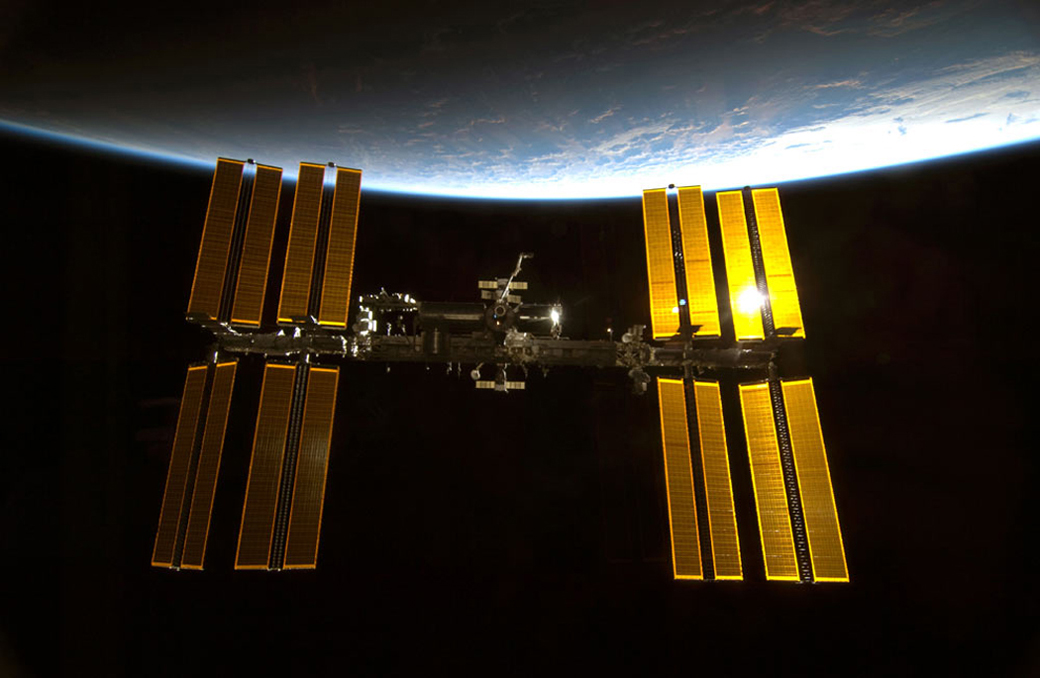NASA Astronauts Beat Clock, Wrap Up Spacewalk

Two NASA astronauts working outside the International Space Station raced against the clock during a spacewalk today (Oct. 15).
NASA's Reid Wiseman and Barry "Butch" Wilmore performed a 6.5-hour-long spacewalk that included one particularly tricky task that had to be started and completed when the orbiting outpost was in orbital night. Wilmore and Wiseman managed to remove and replace a power regulator that shorted out in May during the short amount of time when the station experienced night. (Space station crew members experience 16 sunsets and sunrises every day.)
"Whoop!" one of the astronauts exulted after the replacement regulator was installed. The regulator, which is used to regulate power from one of the station's solar arrays, needed to be changed out in order to restore the station to full power. [See photos of the Oct. 15 spacewalk]
Mission controllers watched a clock ticking down the time the astronauts had to complete the task. The spacewalk officially began at 8:16 a.m. EDT (1216 GMT) and ended 6 hours and 34 minutes later.
The two astronauts also removed a faulty camera from the outside of the station and installed a new one. Wilmore and Wiseman also moved some equipment to get ready for the eventual relocation of the station's Permanent Multipurpose Module (PMM) in 2015, NASA officials said.
Despite their hard day of work, the astronauts still had time to do a little sightseeing while outside the space station. They both got some good views of Earth during the spacewalk.
"That is amazing," one of the astronauts said when the spacewalkers spotted a possibly erupting volcano while flying above Earth.
Get the Space.com Newsletter
Breaking space news, the latest updates on rocket launches, skywatching events and more!
"I see Cairo," Wiseman said during a pass over Egypt. "Can't quite make out the pyramids, though."
The PMM needs to be moved in order to make way for a pair of commercial crewed vehicles that could begin flying astronauts to the orbiting outpost as early as in 2017. Astronauts will also need to install a set of international docking adaptors that should fly to the station in 2015 for the commercial vehicles.

The two October spacewalks kick off a series of EVAs (extravehicular activities) designed to make way for the new private spaceships once they start delivering astronauts to the station. Last month, NASA awarded SpaceX and Boeing multibillion-dollar deals to develop their astronaut taxis, with the aim of getting at least one vehicle up and running by 2017.
"We're going to be doing the things we need to do on these EVAs to prep for moving some modules around," Kenny Todd, space station integration operations manager, said during a news conference before the spacewalks. "All that is in preparation for being able to support future [commercial] crewed vehicles coming to [the] station. We're trying to get out in front of that … We'll be prepping for moving modules; we'll be installing a new docking adapter system. All of that will be happening throughout the next several months on board the station."
This was the first spacewalk for Wilmore and the second for Wiseman. Wiseman ventured out on his first spacewalk on Oct. 7 with European Space Agency astronaut Alexander Gerst, who helped prepare the two spacewalking astronauts for their work today.
Three cosmonauts — Maxim Suraev, Alexander Samokutyaev and Elena Serova — who also work as part of the laboratory's Expedition 41 crew, join Gerst, Wiseman and Wilmore on the station. Samokutyaev and Suraev are scheduled to take a spacewalk next week, on Oct. 22.
Follow Miriam Kramer @mirikramer and Google+. Follow us @Spacedotcom, Facebookand Google+. Original article on Space.com.
Join our Space Forums to keep talking space on the latest missions, night sky and more! And if you have a news tip, correction or comment, let us know at: community@space.com.

Miriam Kramer joined Space.com as a Staff Writer in December 2012. Since then, she has floated in weightlessness on a zero-gravity flight, felt the pull of 4-Gs in a trainer aircraft and watched rockets soar into space from Florida and Virginia. She also served as Space.com's lead space entertainment reporter, and enjoys all aspects of space news, astronomy and commercial spaceflight. Miriam has also presented space stories during live interviews with Fox News and other TV and radio outlets. She originally hails from Knoxville, Tennessee where she and her family would take trips to dark spots on the outskirts of town to watch meteor showers every year. She loves to travel and one day hopes to see the northern lights in person. Miriam is currently a space reporter with Axios, writing the Axios Space newsletter. You can follow Miriam on Twitter.









